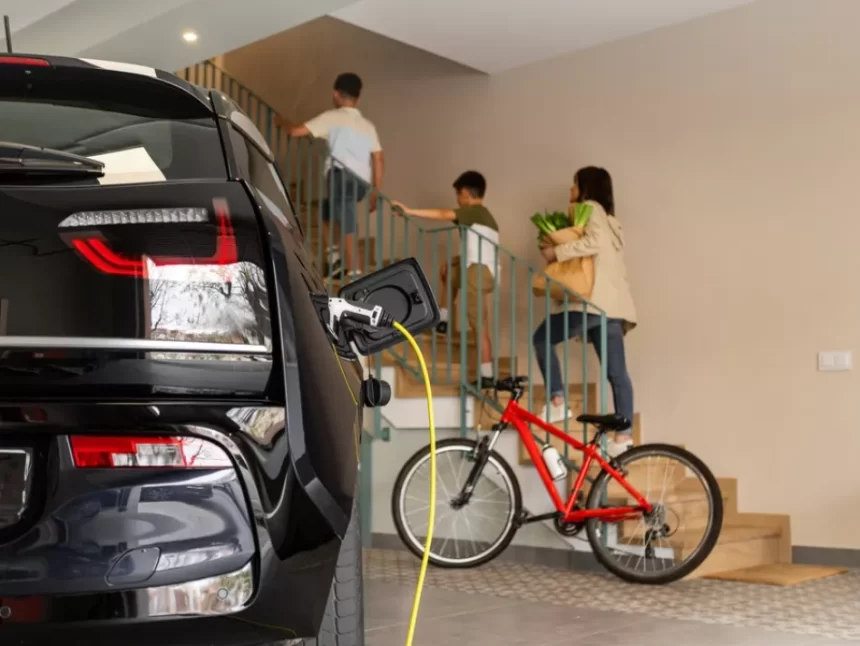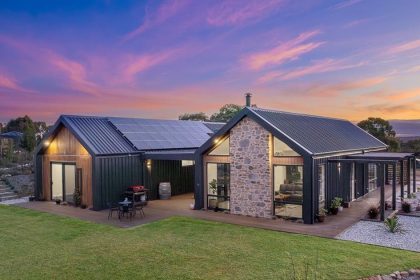The head of one of Australia’s largest energy companies says the boom in electric vehicles will slash household power bills in half as grids swap fossil fuels for green energy.
Speaking at the Future Energy Conference late last month, SA Power Networks CEO Andrew Bills told audiences electric vehicles were the “next big thing” in influencing the country’s energy outcomes.
“We can kill two birds with one stone when it comes to electric vehicles, with cheaper transport and cheaper energy for households,” said Mr Bills.
“They (electric vehicles) have batteries three to ten times the storage capacity of home batteries and are a great opportunity to utilise the State’s abundance of renewable energy.
“Electricity is much cheaper for running a vehicle than petrol/diesel and indicatively, we believe that the average household could halve their total energy spend from about $4,500 to about $2,400 per annum by switching to an EV.”
These savings are made possible by the nation’s rapid adoption of renewable solar energy. More than 3.3 million Australian households have embraced this technology, and experts predict that this number will nearly double by 2032.
Mr Bills said there were now more than 37 per cent of SA Power Network customers with solar, with a total installed capacity of almost 2.2GW – more than sufficient to regularly meet the State’s electricity needs in the middle of mild sunny days.
“South Australia already is a world leader with 350,000 rooftop solar installations, more than 35,000 batteries and significant potential that will be unleashed by electric vehicles as we electrify transport,” he said.
“The network has tremendous spare capacity outside peak times. We can unlock this capacity and create significant value for customers and the community by encouraging ‘flexibility’ in energy use.
“If we get it right, we can significantly increase network asset utilisation and help lower energy costs for all.”
The main focus would be to encourage households to use electricity as much as they could in the daylight hours, soaking up the excess solar energy and putting it in their EVs or powering other appliances.
EV adoptions pick up speed
When it comes to the EV transition, Australia has a lot of work ahead of us if we hope to bridge the gap between other electrified nations. Currently, only 3.8 per cent of new car sales in Australia are electric, significantly lower than places like Norway, which sit at 88 per cent.
But change is on the way.
The Federal Government is in the midst of developing its first National EV Strategy and recently announced Fringe Benefits Tax (FBT) exemptions to incentivise salary-sacrificing programs by $3,000 – $5,000.
State Governments also have a host of incentives and policies to encourage buyers, including discounted registration, upfront rebates, interest-free loans and tax exemptions.
The ACT is leading the way, with all petrol and diesel vehicle sales to be ended by 2035 and an ambitious target of 80-90 per cent of sales being electric by 2030. NSW and Victoria are also working toward 2030 targets of 52 per cent and 50 per cent of all light vehicle sales to be electric, respectively.
In the last year alone, the Federal Chamber of Automotive Industries reported EV sales had jumped by 184 per cent as more Aussies made the switch to go green.
According to Mr Bills, this rapid adoption of EVs is thanks to many manufacturers moving away from internal combustion engine (ICE) cars.
“More than 20 countries and many major automakers have announced plans to phase out new internal combustion engine (ICE) cars between 2025 and 2035 and that will flow onto the SA market,” he said.







